Off the High Horse of Science: Is There a Moral to the Paranormal?
“Moral (noun) means the ethic or principle of a story or event.”
-Online thesaurus
“Ordinary theologians have overlooked crabs and periwinkles—”
-Charles Fort
First of all, let me come right out and say it—I am going to be making all this up. You might as well write about the economic viability of a tooth fairy as the moral dimensions of the paranormal. I don’t feel as if I’m qualified to make any objective claims about what certain mysteries might mean to our lives, and those I do make are related more to my views as a Fortophile-Luddite-Anarchist than any highfalutin ree-search. But nonetheless, I feel that we may weigh all experiences in our hearts, and the same scales that weigh angels against demons might weigh all the mysteries of life and the cosmos.
ADVERTISEMENT
Truth be told, there is already a moral dimension to what we consider paranormal. Because it is defined by our culture, though, it is hard to see. We grow up with certain concepts that are so pervasive and unquestioned that we take them for granted.
Here’s an old Buddhist story that sets an example. A young fish once asked his grandmother, “What is the ocean?” His grandmother replied, “The ocean is all around us.” The little fish asked, “But what’s it like?” The grandma was stumped. What could she say? It’s wet? That hardly means anything when everything is wet! It’s hard to see something unless we go outside of it. So, before we dive into the possible moral aspects of the paranormal, let’s see what ideas about it we probably already have.
First of all, I have always found it curious that the main exposure people in our culture have to the “supernatural” (as if anything is more than natural) is through horror films. These films display the dark side of our collective consciousness. They graphically display what is taboo, in a way serving the ancient role of storytelling for modern society. Such things as murder, insanity, and dark spiritual forces are given a stage to act out their nature, showing us just what is at stake if such things should gain a foothold in our lives. In a way, the scary story exists to set us against fear, malice, and deceit through a type of catharsis. It’s what religion and folk tradition have been doing since time untold, but since this important role of the scary story is little understood by 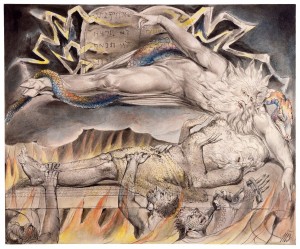 Hollywood, the message has become immature and ineffective. People are more likely to leave a horror movie feeling distrust, anxiety, and paranoia than a healthy understanding of the dangers in the world.
Hollywood, the message has become immature and ineffective. People are more likely to leave a horror movie feeling distrust, anxiety, and paranoia than a healthy understanding of the dangers in the world.
It could be that paranormal phenomena are most portrayed in horror movies because it’s an easy way to slip these beliefs through the cracks. After all, they’re just spook flicks, they’re not to be taken seriously. Much in the same way, pulp science fiction and comic books have long been used to disguise radical political beliefs. Controversy in a fantasy world is much easier to swallow, or turn a blind eye to. (Here I think of George Orwell’s Animal Farm, Ursula K. Leguine’s stories, and Alan Moore’s comics.)
Another aspect of our cultural conditioning is our abject fear of death—you might even go so far as to call it a denial, a rejection of death. Death just doesn’t seem to sit right with most people. But to deny death is to deny life. If you have eaten today, death has become your living warmth. If you have stepped outside and seen the fresh spring grass, or the buds on the leaves this April, you have seen how life returns from the ashes of death in a great and endless circle. (This is why Easter—the celebration of Christ’s resurrection—is in the spring, around the time of Beltane. Part of the allegory of Christ is that to sacrifice one’s own life for the sake of life itself is an act of the greatest good, and is in itself a simple metaphysical recognition of the cycles of life. These sacred circles are degraded by modern burial methods… but I digress.)
Not all cultures fear death in this way. In some Native American tribes it was thought best to meet death on your feet, singing and dancing into the next world. They saw death not as a defeat, an end, but as only a shining moment in the great hoop of time. This is at base a recognition of the common spirit which upholds all life and the universe itself–that from which we come and to which we must return. At the time of death, this does not end, only one of its manifestations ends—like a wave of the ocean dying out on the shore.
I think our cultural fear of death also speaks to a widespread immaturity. I don’t mean that in a degrading way, but I sincerely sense an all-too-common lack of fulfillment with life, mirrored in the ever-rising rates of depression and anxiety. Websters defines maturity as, “Having reached a final and desired state,” something that seems to elude many in the modern landscape. Perhaps it’s our fixation on alienating technologies that robs us of the richness and warmth of human experience. Perhaps it’s the ever widening gap between our culture and the natural world, to which we are more biologically and psychologically suited. Perhaps it’s a general lack of heartfelt dignity, when one is trapped in the rote mechanics of a meaningless job for fear of homelessness and hunger. Perhaps it’s the ominous knowledge that constant war—on both human communities and the natural world—is all that maintains the industrial way of life, which in the long run is unsustainable at its very foundations. But again, I digress. Whatever the cause of our cultural fear of death, it is too sore a subject for most to probe deeply. More often than not people would rather opiate themselves out of life in a hospital bed than deal with the painful task of reckoning with a life which they are not ready to leave. (God bless them, and may that not sound too harsh.)
Finally, our culture has a dire attachment to the material. This is all part and parcel of the industrial paradigm, which sees the world as things—resources to be turned into capital and vice versa—and fails completely to recognize their spiritual value. Trees are not seen as great guardians, givers, and independent spirits with their own lives. Instead, they are calculated into board feet and dollar signs. The utilitarian becomes the sole focus of a materialistic society bent on production.
In a similar vein, dreams are generally 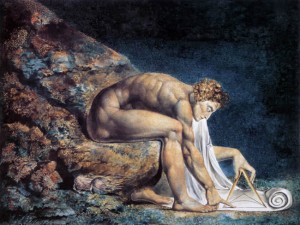 considered unreal, perhaps because scientists can’t agree what use they are. The whole psychic realm is trivialized because it does not serve the needs of production. Sunlight dancing on the water is considered real, though no more substantial than dreams, because it is part of our common experience. Of course dreams are a common experience, just not in the waking world. People sometimes share their dreamscape with friends or loved ones who wake up with the same memory, often vast distances away. It is rare, but it happens. I even remember reading about a whole tribe of 49 who dreamed together every night. Furthermore, dreams have been the resevoir for our sleeping souls for as long as anyone has cared to remember. How are they unreal? If you go down to the water, it will be wet. If you go to sleep, you will dream!
considered unreal, perhaps because scientists can’t agree what use they are. The whole psychic realm is trivialized because it does not serve the needs of production. Sunlight dancing on the water is considered real, though no more substantial than dreams, because it is part of our common experience. Of course dreams are a common experience, just not in the waking world. People sometimes share their dreamscape with friends or loved ones who wake up with the same memory, often vast distances away. It is rare, but it happens. I even remember reading about a whole tribe of 49 who dreamed together every night. Furthermore, dreams have been the resevoir for our sleeping souls for as long as anyone has cared to remember. How are they unreal? If you go down to the water, it will be wet. If you go to sleep, you will dream!
There has for a long time (maybe since Descartes), been a staunch separation between the more intuitive functions of the mind—whose visions are too ephemeral to pin to a cork board—and the concrete waking landscape. The psychic landscape, whose tides of perception reach deep within and far away, has been relegated to the landfill of systematically ignored phenomena known by and large as the “supernatural.” Although psychic impressions are often accompanied by a sense of serenity and deep meaning, you are more likely to come across them in a horror movie than a sermon, a thesis, or a common conversation.
Of course quantum physics has begun to maneuver in on the realm of the mind, and has been heralded as a more humanistic science of the New Age. But quantum theory only has followed the mechanistic physic’s logic to its conclusion. Now science can more completely manipulate, dissect, and objectify ever-finer strata of being. In fact, although billed as working in a more refined realm than Newtonian physics, quantum mechanics has only further alienated itself from a holistic, natural worldview by stating that the universe is nothing more than a mathematical equation, something like a universe of cybernetics (again showing how belief conforms to the needs of production, even up to this information age). An article by Wolfi Landstreicher demonstrates this well:
“While some have tried to portray the concepts of relativity and quantum physics as a break with the mechanistic worldview held by science… in fact, this ‘new’ view of the world as pure mathematical construct made up of bits of information was precisely the aim of science. It developed its material manifestation in cybernetic technology… The development of cybernetic technology and particularly of virtual reality opened the door to the possibility of non-material experimentation for those branches of science for which this had previously been impossible, particularly the life sciences and the social sciences… And if the universe is nothing more than interchangeable bits of information in mathematical relationship to each other, then such experiments are on the same level as those carried out in the physical world. In fact, they are more reliable, since the obstacles of the senses and of the possible development of sympathetic emotion toward those upon which the scientist is experimenting do not come into play. No need to worry about the fact that anything mathematically calculable, and thus programmable, can happen in the virtual realm; this merely shows the infinite technological possibilities to be found in the manipulation of bits of information.”
Quantum physics hasn’t lead to worldwide enlightenment or an acceptance of the more evanescent phenomena which have accompanied humanity from the very beginning. Instead, it has paved the way for nanotechnology, genetic engineering, and a more totalizing sphere of control for the scientific elite who have access to these highly specialized tools of manipulation. Any hopes of using quantum theory to prove the viability of paranormal phenomena have been shelved by the scientific establishment, just as in ages before.
Originally, science was a philosophical experiment, a blend of alchemy, religion, and the quest for eternity, but not any more. Landstreicher writes, “The earliest modern scientists were mostly devout christians. Their mechanical universe was a machine manufactured by god with a purpose beyond itself, determined by god. This conception of a higher purpose disappeared from scientific thought long ago…” Perhaps we can chalk that up to the inevitable progression of civilization. The sacrifice of spiritual belief in favor of homogony is a pattern inherent in domestication itself, evident as early as the plow hit the soil to homogonize a biodiverse meadow with a single artificial crop. Since the Agricultural Revolution first set a rift between humanity and nature (the “original trauma” according to Chellis Glendenning), the spiritual element has always been pushed out in favor of the quantifiable, the controllable, the objective. There is no room in the labrotory (or the factory) for God.
John Zerzan put the critique of materialistic reason well when he wrote, “Although still touted as the precondition for ‘objectivity,’ human reason is no longer neutral. It has somehow become deformed, with devastating impact: our reason imprisons our true humanity, while destroying the natural world. How else to account for the fact that human activity has become so inimical to humans, as well as to all other earthly species?… This disease of reason, which interprets reality as an amalgamation of instruments, resources, and means, adds an unprecedented and uncontrolled measure of domination. As with technology, which is reason’s incarnation or materiality at any given time, reason’s ‘neutrality’ was missing from the start. Meanwhile, we are taught to accept our condition. It’s ‘human nature’ to be ‘creative,’ goes part of the refrain.” Historically (perhaps for 99% of human existence), creativity did not rely on the objectification and destruction of the natural world to flourish, but this is now widely considered an inevitability. This dynamic has quickly spiraled out of control, with the last century and a half of industrialization throwing the world into both the sixth great mass extinction in history and a whole new geological era defined by human impact on the earth—we live in the Anthropocene, the age of humans.
I hope at this point I have shed some light on the cultural dynamics by which many value “supernatural” (and of course plain ol’ natural) phenomena. These dynamics transcend any religious conceptions of heaven and hell, being common to the entire developed world, whether Buddhist, Jesuit, or Atheist (though many traditional cultures have steadfastly resisted this “progress”).
So what conclusions may we draw? I think the implications of these cultural trends call for something beyond putting Bigfoot on the Endangered Species list. I think they fundamentally call into question where we put our faith, our creative and transformative power of belief.
Obviously our views of the paranormal have been prefigured by a culture which leaves us wanting in other spheres of knowledge and fulfillment. But has this always been the case? Surely not! Folk traditions through the ages have incorporated all aspects of existence into a unified whole, passing on stories of the paranormal through a wholesome blend of lore, legend, medicine, and tradition. A whole cosmology takes shape in the form of folklore.
I think a great example of this is the Wendigo—a terrifying folktale of the Algonquian people. The Wendigo is said to be an awful spirit, towering fifteen feet tall and covered with long, thin, matted hair. It is gaunt with ravenous hunger for human flesh, its tattered lips hanging off the bone, its eyes jaundiced and sunken into its skull, its heart made of ice. It embodies all the harshness and dangers of the winter—the cold, the hunger, the darkness. The Algonquians feared possession by the Wendigo more than anything else. It would result in an insatiable hunger for human flesh, a vile, rabid madness, and the 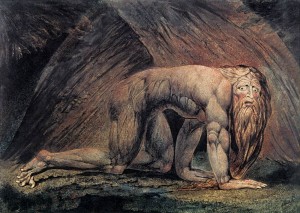 turning of one’s heart to ice.
turning of one’s heart to ice.
It makes for a nice campfire story, until you do some research. Apparently there was an abundance of cases recorded by early settlers in which—beset by the famine of the winter months—Natives would murder and devour their friends and family, and fly into a wild, murderous frenzy. They would bloat up to twice their normal size, exhibit superhuman strength, and even when they were sweating by a fire, their chest would be cold to the touch. There were only two cures. One was to swallow a burning coal to thaw their icy heart, accompanied by a healing ceremony by a shaman. The other was death. The Wendigo would have to be violently subdued—often through desperate means—and then burnt, quartered, or buried under a pile of heavy logs to ensure it did not rise again.
Psychologists of the day chalked all this up to a culture-bound insanity which they dubbed Wendigo Psychosis. However, no medical or psychological reasoning could account for the physiological symptoms—not to mention the horrifying behavior—associated with Wendigo possessions. Astonishingly, medical professionals of the era, as well as witnesses to horrifying cases of Wendigo possession, noted the inexplicable bloating, violence, and bodily chill accompanied by a ravenous cannibalistic desire. Needless to say, Western medicine never found a cure for this particularly unsettling breed of psychosis, sometimes interning patients for their whole lives without any sign of progress.
(We might do well here to remember that once upon a time runaway slaves were diagnosed with a mental disorder, Drapetomania, which caused them to flee their “owners.” Racist ideologies often go unseen in their own times, and even today the beliefs of Native Americans face endless scorn and devaluation. For example, it is still Vatican law that Native Americans and other indigenous people are basically a subhuman race who rightly should be put in the brutal mercy of their Christian colonizers—for their own good, of course.)
Nathan D. Carlson, an Algonquian who grew up hearing his grandmother’s stories of the Wendigo, wrote a highly recommended account of Witiko possessions from 1878-1910 (you don’t want to pass that link up!) by using personal testimony and rigorous archival research. His basic assertion was that, “The witiko [wendigo] phenomenon should be analyzed from within northern Algonquian cosmologies rather than Western perspectives if it is to be adequately accounted for in future discussions.” In other words, the Wendigo is only an unexplained phenomenon if we choose to see Algonquian testimony as primitive, superstitious, and generally beneath us. Science readily tramples anything beneath its high horse. Nonetheless, folk traditions such as the Algonquian’s readily explain and contextualize “supernatural” things such as the Wendigo, interweaving experiences, cautions, and messages of right livelihood into the tapestry of lore.
Vampire and ghost mythology is another example of how legends of the otherwordly may play many roles in the theatre of human life. Vampires, for example, seem to embody pestilence in some ways, as they are allergic to garlic (a natural antibiotic), silver (a natural antimicrobial), and the cross (a natural antidemoniac). The legend personifies an entity which saps a soul of its life force (sickness), while teaching cures, setting taboos, and placing guards against evil influences in society. Whether the legend is functionary or historical I will leave to you. But healing stones and twigs, along with careful taboos against the dead (almost universally associated with the underworld) have guided our ancestors through more calamaties than we know. Vampires were once a very real fear both in Europe and colonial America, as they are today in Africa, with plently of 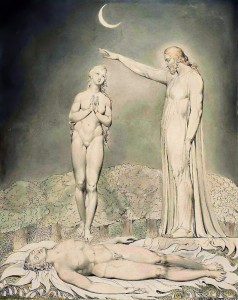 ghoulish reports to back them up.
ghoulish reports to back them up.
Likewise, ghosts have not always been purely the object of fear, or even purely the souls of the dead. Sometimes the spirits of the living appear far from their earthly abodes. In Scottland, this is called the fetch, in Germany the doppleganger. It is usually seen out of the corner of a close friend’s eye. If it appears in the morning, nothing bad will follow; if at night, it means death. By and large, yes, the spirit of one passed on is said to be a lost soul, an ill omen, or a downright troublemaker as it lingers here on earth, but there are also ample stories in the annals of lore to suggest they might be looking after their loved ones, helping to guide the living, or simply attending to some last minute house cleaning before they lay down to rest. One Irish accout has a ghost appearing to her sister to settle a humble debt for her.
“Rose, dear,” she said, as she appeared before her sister in the old wallsteads, “my mind’s oneasy about them twa’ red shawls that’s in the basket. Matty Hunter and Jane Taggart paid me for them, an’ I bought them wi’ their money, Friday was eight days. Gie them the shawls the morrow. An’ old Mosey M’Corkell gied me the price o’ a wiley coat; it’s in under the other things in the basket. An’ now farewell; I can get to my rest.”
I have personal experience with the validity of certain folk traditions of the world, and especially the regional spirits long told of by Native Americans. I once saw the shadowy figure of a lizard-man crawl across my floor in Las Vegas while bedding down for the night. Only months later did I uncover the belief in these beings among the indigenous Shoshone and Paiute people in an obscure government document about the traditional significance of the nearby Spring Mountains. Apparently these beings inhabited the “lower world” in their folklore, while we inhabit the middle, and anthropomorphic beings of great grace and power inhabit the topmost plane. I could find absolutely no other reference to this belief anywhere (except when I asked a Shoshone), so there’s no way the impression could have been subconsciously planted into my mind. That is only one brief example of such experiences I have had, and I think it is the most telling because the belief in a lower, middle, and upper world is common across the globe, represented usually as a “World Tree” or axis mundi which aligns all the beings of existence—seen or unseen. Perhaps some lore is not just subjective, culture bound tall tales, but more region-specific knowledge. I’m sure Hawiian tribes didn’t have stories about polar bears, nor of the lizard-like shadow men of the Shoshone. However, both might share some conception of the axis mundi.
Stories from the upper world, usually in the form of angels, have come to me from trusted friends as well. One buddy of mine—Nubs was his name, because he lost a hand in a car accident—told me about a time he was sitting in the middle of the forest, lost without food or water, not a single soul to be found for miles around. Suddenly, a man about his age appeared out of the bushes without the slightest sound of approach. When nubs asked his name, he said, “I’m archangel Michael.” Michal then asked him if he wanted water. He said sure, and Michael produced a canteen. He then offered Nubs food, beer, and even marijuana which Nubs accepted gratefully. Every time Michael would set one of these offerings down, it seemed to vanish out of sight. After a while, Michael left through the bushes, leaving not a trace.
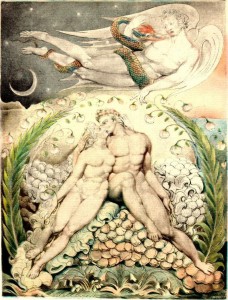
Again, this is just one of many stories I have which confirms to me the reality of the twilight realms. Trust me, they all sound as far fetched as that one, but I have no reason to not trust my friends and my own two eyes! It’s a shame that a good hunk of the population is blind and deaf to the more wonderful things in this world, probably through little fault of their own.
Any system of belief which seeks to extinguish the wisdom of this ages—along with the cultures, landscapes, and stories through which it reverberates—I believe cannot escape the scrutiny of our morals. There are angels and demons among humanity, as well. The question lies with each one of us as to where we will cast our lot. We are born with the technology to weigh the world in our hearts, even without the benefits of lore and legend. It is called intuition. We feel fear, sorrow, or anger in the presence of dark energies for a reason, just as we feel bliss, compassion, and nurturing in the presence of the beautiful spirits. Some say that our emotions are the foods which the other realms live on. If so, we must be all the more careful.
I find the word belief marvelous. The first syllable, be-, gestates deep in the throat—it comes from within. The next syllable, -lief, lingers on the tongue for just a moment before it escapes the mouth, as if voicing a butterfly which flutters off as the word wilts into silence. Our belief is our power—it gestates within and in turn creates the world around us. It is our guide, our north star. It is the path we walk between the dawn of life and the starry dusk of the spirit road. All things exist in between, and anything unaccounted for leaves a gap in our conscience to be filled—whether with rough soil or the fragrance of flowers, or an abyss of shadows and fear. Our choices, our beliefs, are written upon the earth for our grandchildren to read, whether in the ruins of heavy concrete, unmarked graves, and lifeless rivers—or the burgeoning of flowers, the depths of forests, and the resonant sound of laughter. Perhaps heaven and hell are closer than we realize.
MORE GREAT STORIES FROM WEEK IN WEIRD:


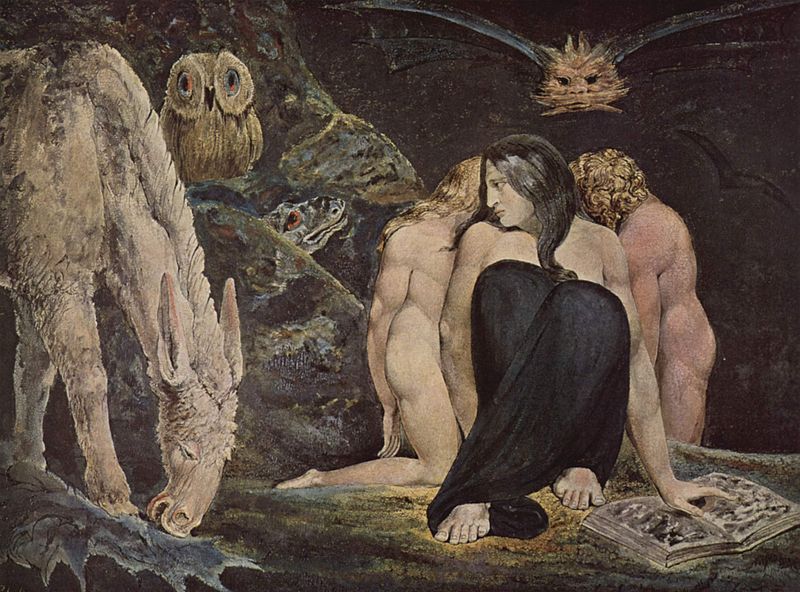
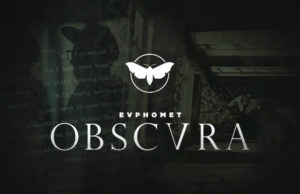
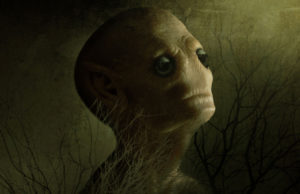
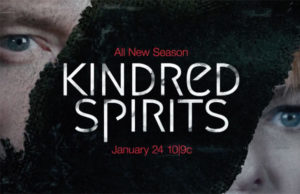
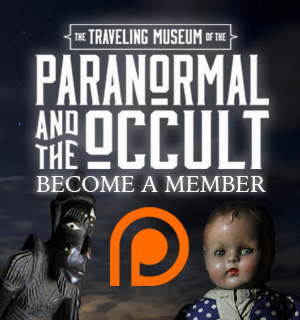
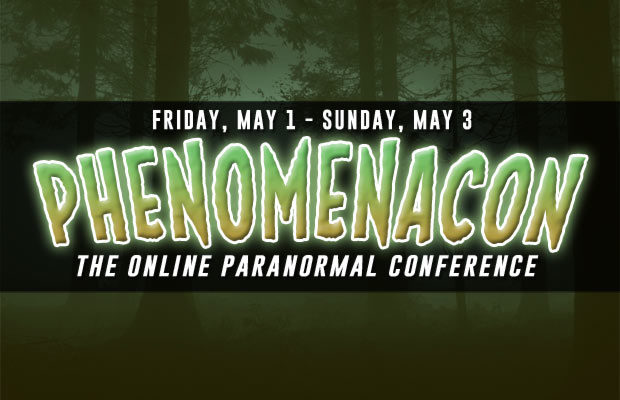
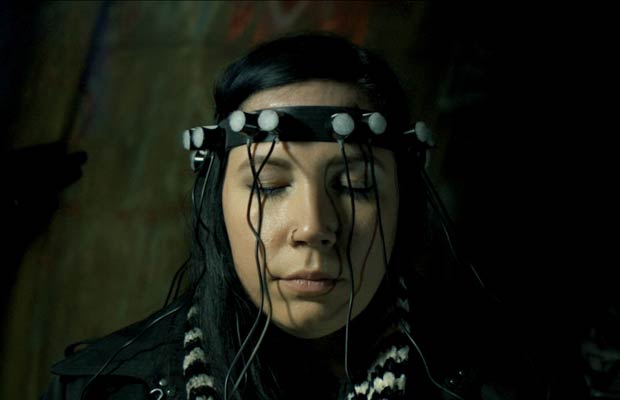
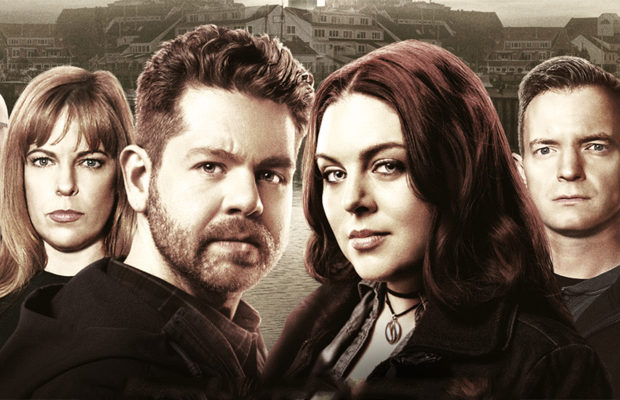
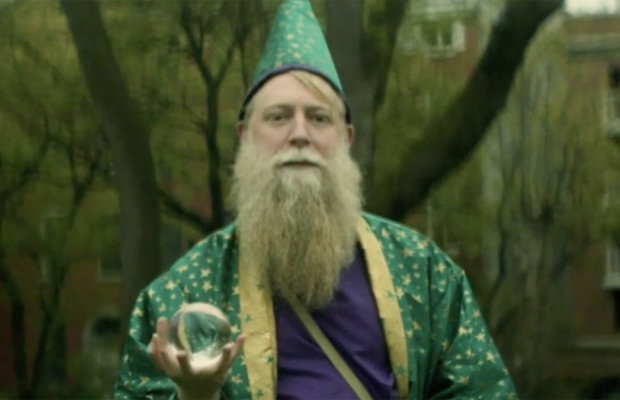

You must be logged in to post a comment Login